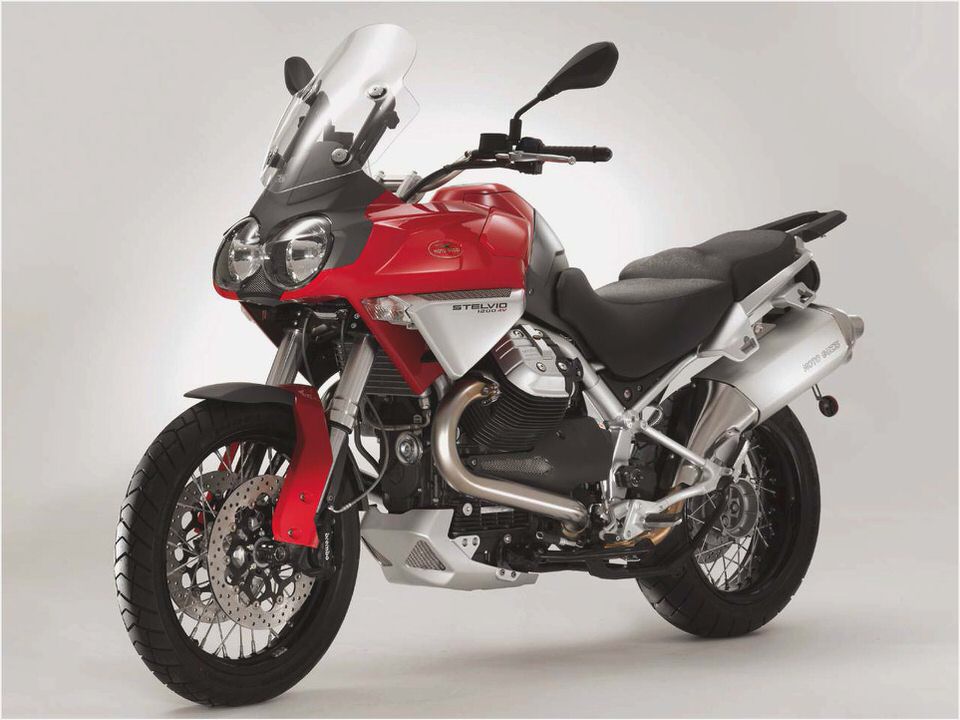
Moto Guzzi Stelvio 1200 Review
Moto Guzzi Stelvio 1200
It would have to be something that could handle the freezing temperatures, changing road conditions and offroad trails of the South Island. And it also had to be able to handle a load of gear. Having sampled the range from Moto Guzzi recently, I knew that the big Stelvio would be perfect for the trip.
Of all the manufacturers attempting to emulate the Ewan McGregor/Charley Boorman, Long Way Round-driven success of BMW’s 1200 GS, Moto Guzzi ought to have the best potential. After all, the basic specification of the GS – shaft drive, single-sided swingarm, 1200cc air-cooled twin, dry single-plate clutch, 105bhp – could just as easily come out of a Guzzi brochure as a BMW one, cylinder angle aside. And let’s not forget, in the past Guzzi was BMW’s main rival as a manufacturer of touring bikes.
Engineering and appearance
Moto Guzzi lives and dies by its signature transverse-mount V-twin. The latest version of the 90-degree, 1151cc mill drips character, exhibiting all the expected quirks – like the pronounced gyroscopic shudder from the centerline crankshaft. The bike is powered by what is essentially the same eight-valve engine as the Griso 8V – ignore the Stelvio’s confusing 4V designation, because this is definitely an eight-valve.
For 2010 the bike has a retuned engine. New camshafts, revised fuel-injection mapping and a larger-volume airbox broaden the motor’s power and increase its versatility.
The Stelvio pulls effortlessly with its strong grunt, the engine is smooth and, although at lower revs it can still hesitate, the mid-range torque is adequate for everyday riding. As we headed into the Central Otago hinterland, the big V-twin seemed to get smoother as the rpm rose, but there was no need to rev the motor. It was much more enjoyable to short-shift through the precise six-speed gearbox, making the most of the engine’s flexibility and the traditional character of a big, booming V-twin.
The seat is roomy and not bad for long stints, but you need to be tall as even the lowest of its two positions is 820mm from the ground. It can be raised to 840mm quite easily.
The Stelvio’s bars are wide and the footrests positioned to allow plenty of legroom, while there’s some scope for adjusting both gear lever and rear brake lever to match the rider’s feet. The screen height can be adjusted without leaving the seat or using tools; in the high position most riders will find the airflow quiet and smooth, although taller ones still get some wind noise.
Fuel capacity is two litres less than the GS’s at 18 litres, 280km should pass before the tank runs dry, but for a go anywhere adventure tourer I would have expected to clear the 350km mark.
Performance and handling
Another factor that might sway buyers is the Guzzi’s handling, which, despite a weight disadvantage over the GS, is light, easy and perfectly neutral. It’s often the case that shaft-driven bikes have a poorer ride quality than their chain-driven equivalents, but the Stelvio soaked up all the bumps, if anything exhibiting more ride harshness from the front than the rear. The suspension works effectively; it’s soft at the expense of some feedback, yet it doesn’t dive too much under heavy braking.
This is not a bike you’ll be flicking rapidly because it’s tall and heavy with a long wheelbase, but stability is good. It will still get up and go.
Stopping-wise, the dual radial-mount four-piston Brembo callipers and 320mm discs didn’t let me down, the front providing crisp stopping power where the rear was just a little lax.
The standard Guzzi dash, an awkward mix of round rev counter with square info panel, includes fuel economy and range, average and peak speed, and ambient temperature.
To turn the Stelvio into the all-road tourer, pre-requisite accessories such as panniers, top box, sump guard, fog lights, crash bars and hand guards are available.
The Stelvio had the potential to be Guzzi’s best-selling bike since it mimics several of the GS’s most appealing features, but the low-rev lethargy lets it down, and a bigger fuel tank would be useful, too. The build quality is excellent, and the few niggles I experienced, such as the stiff gear changes and tight handling I’ll put down to the fact that the bike only had 150kms on the clock.
The big question is, does it match the BMW, the yardstick that all big duallies are invariably measured against? I’ll stick my neck out and say – nearly there. And price-wise it’s a few grand cheaper then the Beemer.
Specifications
Engine 90° V-twin engine, four valves per cylinder
Capacity 1151cc
Max power over 77kW (105bhp) @ 7500rpm

Max torque Over 107.8Nm @ 6400 rpm
Exhaust system Stainless steel, 2-in-1 type, 3-way catalytic converter with lambda probe (Euro 3)
Gearbox Six-speed
End transmission Compact reactive shaft drive system called CA.R.C; double joint and floating bevel gear pair
Front suspension Fork with 50mm inverted stems, fully adjustable (spring preload, hydraulic compression and rebound damping) with radially-mounted brake calliper
Rear suspension Single arm with rising-rate leverage, single shock absorber with hydraulic rebound damping adjustment and easy spring preloading set screw
Front brake Double stainless steel floating disc, 320mm, radial callipers with 4 opposed pistons
Rear brake Fixed stainless steel disc, 282mm, floating calliper with 2 parallel pistons
Length 2250mm
Height 1475mm
Seat height 820/840mm
Fuel tank capacity 18 litres
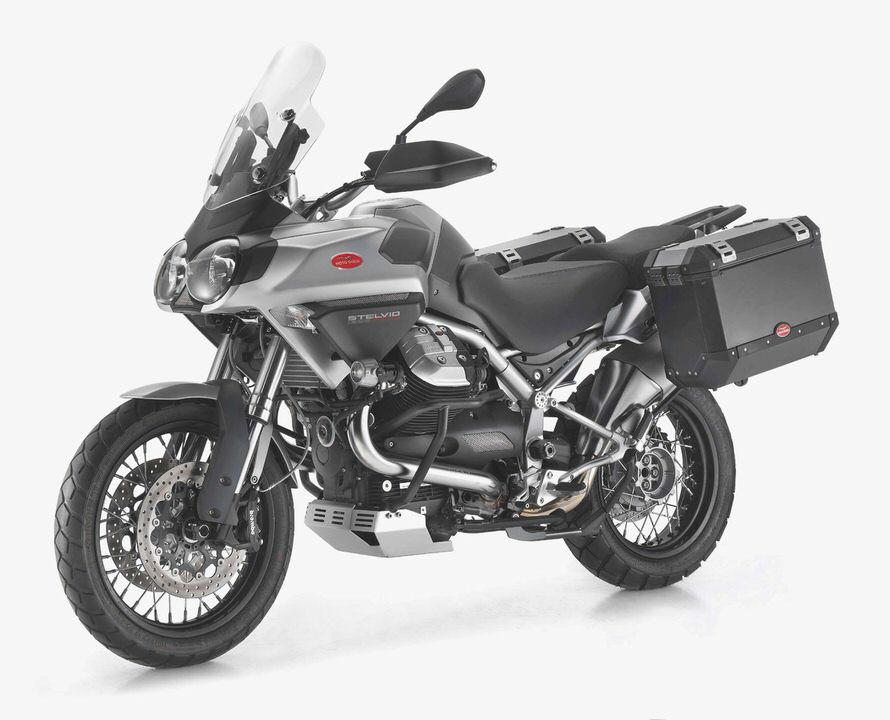
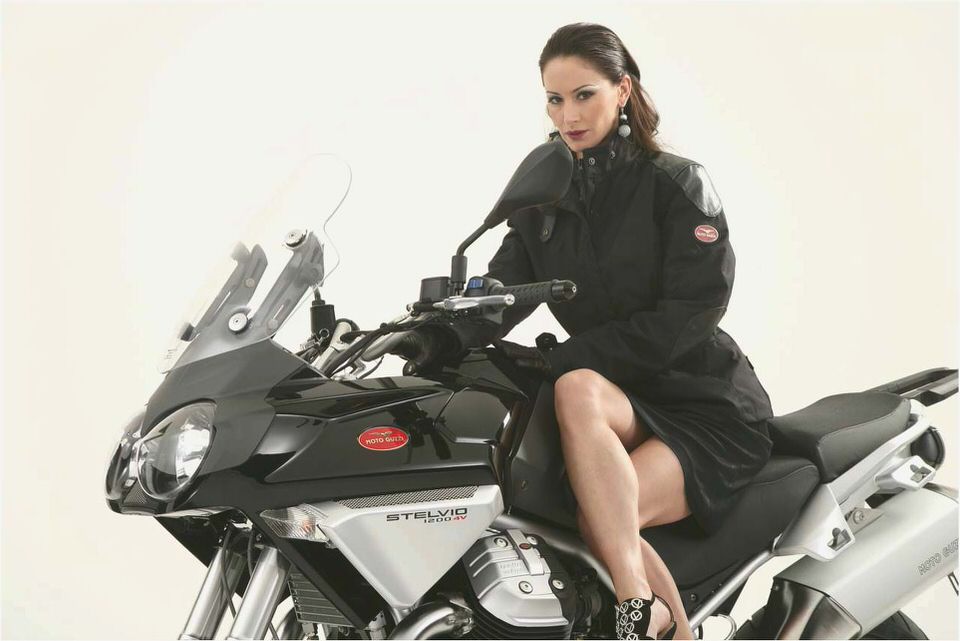
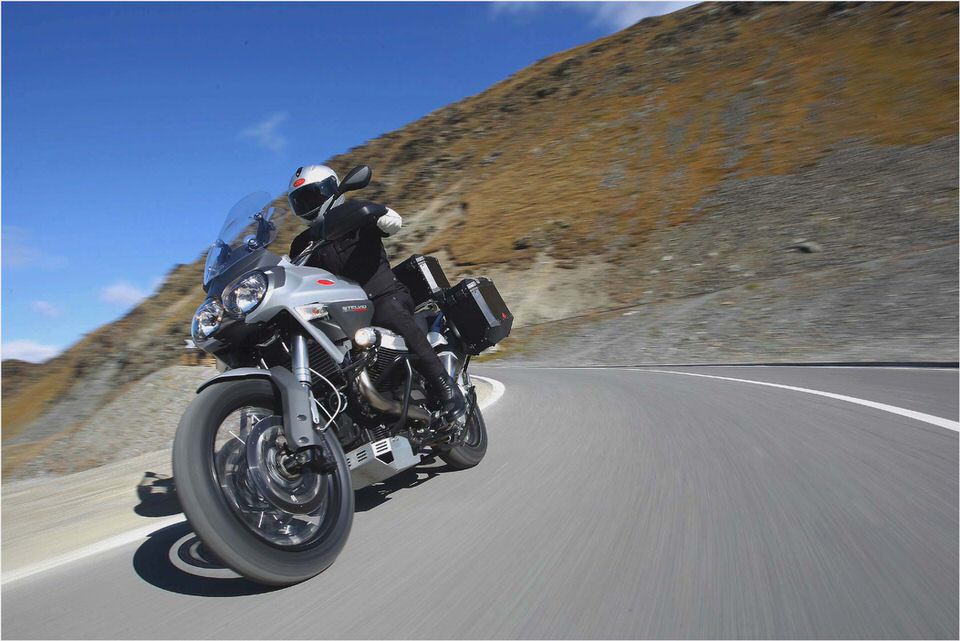
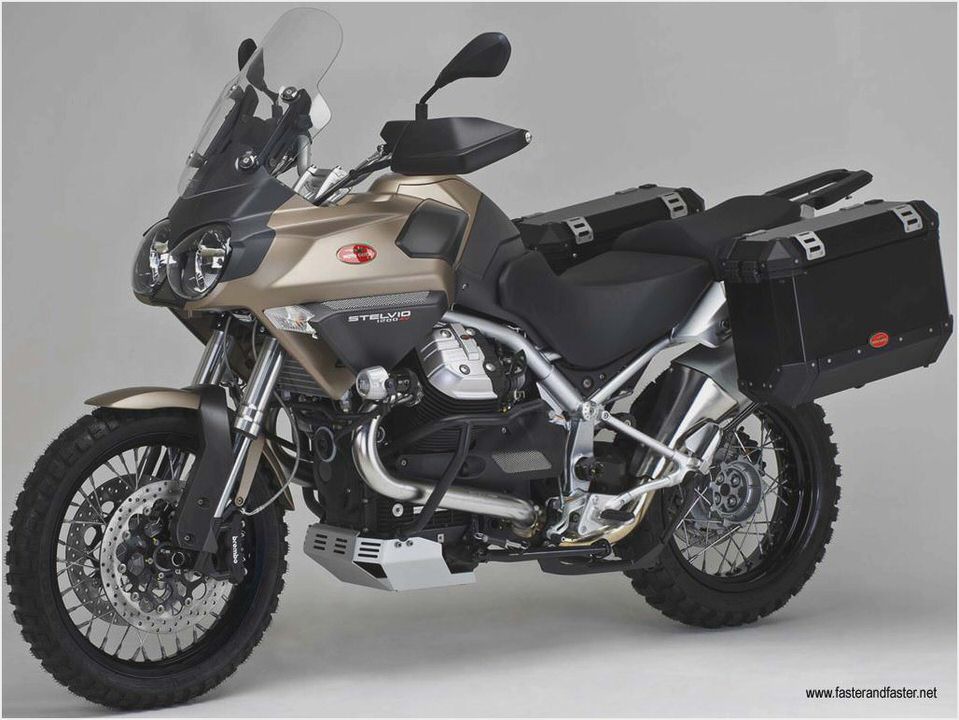
- Moto Guzzi California 1400 Owners Manual Owners Guide Books
- Triumph Thruxton vs. Moto Guzzi V7 Racer- Comparison Test Review
- 2002 Moto Guzzi Le Mans ride report
- Pierre Terblanche and Miguel Galluzzi on the future of Moto Guzzi RideApart
- Popular windshields for Moto Guzzi Californias : Moto Guzzi California…

